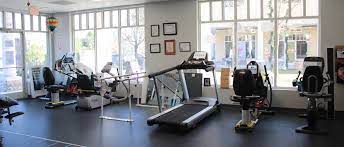Headaches can be a debilitating condition that can significantly impact an individual's quality of life. Migraines, in particular, can cause severe pain, sensitivity to light and sound, nausea, and vomiting. While medication is often used to treat migraines, it may not be effective for everyone. Dry needling is a non-invasive treatment option that has shown promising results in treating migraines. In this blog, we will discuss a success story of dry needling for migraines.
Jane's Story
Jane is a 38-year-old woman who had been experiencing migraines for several years. She had tried various medications and treatments, but nothing seemed to provide long-term relief. The pain and discomfort of her migraines were affecting her ability to work, exercise, and enjoy time with her family.
One day, Jane's friend recommended dry needling as a potential treatment option for her migraines. At first, Jane was hesitant about the idea of needles, but her friend assured her that the procedure was safe and effective.
Jane decided to give dry needling a try and made an appointment with a licensed physical therapist who specialized in the technique. During her initial evaluation, the physical therapist assessed Jane's medical history, symptoms, and overall health to determine if she was a good candidate for dry needling.
The physical therapist explained that dry needling involves the use of thin, sterile needles to penetrate specific trigger points in the body. These trigger points are areas of muscle tension or knots that can cause pain and dysfunction. By stimulating these trigger points, dry needling can help release tension in the muscle and stimulate the release of natural painkillers.
The physical therapist also explained that dry needling is different from acupuncture, which is based on traditional Chinese medicine principles and aims to balance the flow of energy in the body. Dry needling, on the other hand, is based on Western medicine principles and aims to stimulate the body's natural healing processes.
During Jane's first dry needling session, the physical therapist inserted the needles into specific trigger points in her neck and shoulders. Jane felt a slight sensation of pressure at the insertion site, but it was not painful. The physical therapist then gently manipulated the needles to stimulate the trigger points and promote muscle relaxation.
After the session, Jane felt a sense of relaxation and relief. She continued with several more dry needling sessions over the course of a few weeks, and her migraines gradually decreased in frequency and intensity. She was able to return to work and her regular activities without experiencing the debilitating pain and discomfort of her migraines.
Today, Jane continues to incorporate dry needling into her regular healthcare routine to manage her migraines. She has also made lifestyle modifications, such as getting regular exercise and reducing stress, which have helped reduce the frequency and severity of her migraines.
Conclusion
Migraines can be a debilitating condition that can significantly impact an individual's quality of life. While medication is often used to treat migraines, it may not be effective for everyone. Dry needling is a non-invasive treatment option that has shown promising results in treating migraines.
Jane's dry needling success stories is just one example of how dry needling can be an effective treatment option for migraines. By stimulating specific trigger points in the body, dry needling can help release tension in the muscle, promote relaxation, and stimulate the release of natural painkillers.
If you're experiencing migraines, talk to your healthcare provider or a licensed physical therapist to learn more about your options for treatment, including dry needling. With the right treatment approach, individuals can manage their symptoms and improve their overall function.
It's important to note that while dry needling can be an effective treatment option for migraines, it should always be performed by a licensed and experienced healthcare provider. Dry needling is a specialized technique that requires extensive training and knowledge of anatomy and physiology.
In addition to dry needling, a comprehensive treatment plan for migraines may also include other treatment modalities, such as medication, lifestyle modifications, and education. By taking a comprehensive approach to treatment, individuals can maximize their results and improve their overall function.
If you're considering dry needling as a treatment option for migraines, it's important to talk to your healthcare provider or a licensed physical therapist to determine if it's a safe and appropriate option for you. Your healthcare provider can also help you develop a personalized treatment plan that takes into account your specific symptoms, medical history, and overall goals.
In conclusion, migraines can be a debilitating condition that can significantly impact an individual's quality of life. While medication is often used to treat migraines, it may not be effective for everyone. Dry needling is a non-invasive treatment option that has shown promising results in treating migraines. By stimulating specific trigger points in the body, dry needling can help release tension in the muscle, promote relaxation, and stimulate the release of natural painkillers. If you're experiencing migraines, talk to your healthcare provider or a licensed physical therapist to learn more about your options for treatment, including dry needling.


No comments yet